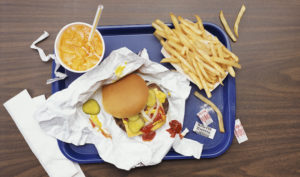
Workers in some states may now be classified as both independent contractors and employees.
The common law of principal-agent relationships admonishes us that “no man can serve two masters.” But can one person work as an employee and independent contractor at the same time, thereby serving both oneself and one’s employer as master in the eyes of the law?
Given that the classifications of employee and independent contractor are mutually exclusive, the answer ought to be no. Yet, in many jurisdictions today, an individual worker might fall into both categories. This state of disarray arises from courts’ applying different tests to different legal claims, driving different outcomes to what ought to be common questions.
Before the Great Depression, when one person hired another, it hardly mattered whether the engagement was characterized as employment or a contract for services. But after the U.S. Congress passed the Fair Labor Standards Act of 1938 (FLSA), requiring that employers pay laborers a minimum wage and overtime pay, the issue became essential. In 1947, the U.S. Supreme Court held in Rutherford Food Corporation v. McComb that “meat boners” engaged to work in a Kansas slaughterhouse, notwithstanding their skill in trade and pay-sharing arrangement, were employees entitled to overtime, because they worked “as a part of the integrated unit of production.”
In the ensuing decades, courts following Rutherford were fairly consistent, answering classification questions in wage and hour cases with a flexible, multifactor test derived from the common law of master and servant. Such a test typically focused first on the purported employer’s control over means and methods, but also considered whether the worker saw an opportunity for profit or loss, invested in her own training and equipment, and enjoyed little permanence in the relationship. Last year, federal courts in California and Pennsylvania, applying traditional multifactor tests, held that Grubhub delivery drivers and UberBLACK drivers, respectively, are contractors and not employees covered by the FLSA.
Like many states, however, California has its own labor laws, including both a labor code and wage orders regulating pay and hours. In April 2018—just two months after Grubhub won in federal court—the Supreme Court of California, in Dynamex Operations West v. Superior Court, chose a different test to determine whether the company’s delivery drivers were employees. The court rejected the traditional multifactor test as prone to abuse. Instead, for California wage-order claims, it adopted a stricter and simpler “ABC” test: whether the worker is free from control; whether the worker performs work outside the hiring entity’s regular business; and whether the worker is engaged in an established business. Unless a hiring entity could prove all three elements, the worker would be deemed an employee.
The ABC test is not new. For decades, it has governed unemployment compensation eligibility in several states, including Massachusetts, Connecticut, Vermont, and New Jersey. The Supreme Court of New Jersey also adopted it in 2015 for state wage claims, and the state’s regulations implementing its new sick-leave law incorporate it as well. The test has its merits, not the least of which is its alignment with Rutherford’s focus on whether work is integrated with production.
As applied to workers in the gig economy, however, it would be truly disruptive. In the Grubhub and Uber cases, the test’s second element alone would reverse the outcome. Despite Uber’s claim that it is a “technology services provider,” even the district judge who found in its favor acknowledged that Uber drivers render a service integral to the company’s business.
Perhaps realizing how disorderly a changeover could be, in September 2018 a California appeals court held that the multifactor test still applied to the state labor code (as distinguished from wage orders). In a brief filed with the U.S. Court of Appeals for the Ninth Circuit, the International Franchise Association begged the court not to apply the ABC test from Dynamex to franchise relationships. And in January of this year, the National Labor Relations Board expanded the number of workers who could be classified as independent contractors by reversing a 2014 decision which had held FedEx Home Delivery drivers were employees entitled to form a union.
The state of the law now is a mess. In New Jersey, for example, Uber drivers should earn sick leave as employees. But they cannot form a union and are ineligible for overtime under the FLSA, because federal law considers them independent contractors. In California, they are independent contractors under federal law, and most likely the state labor code as well—but for state wage orders they are employees. The set of conflicting outcomes plainly makes no sense, neither as a matter of logic nor for the sake of justice or efficiency.
If you are thinking of driving for Uber or Lyft, for example, should you buy disability insurance in lieu of workers’ compensation coverage? What access should you have to other employer-sponsored benefits? Can you count on a minimum wage?
Both workers and employers have the right to expect that the law give clear advice on how to answer these questions. A rational, just, and efficient labor market really does demand that the law recognize for each worker only one master.
This essay is part of a nine-part series, entitled The Future of Workplace Regulation.




